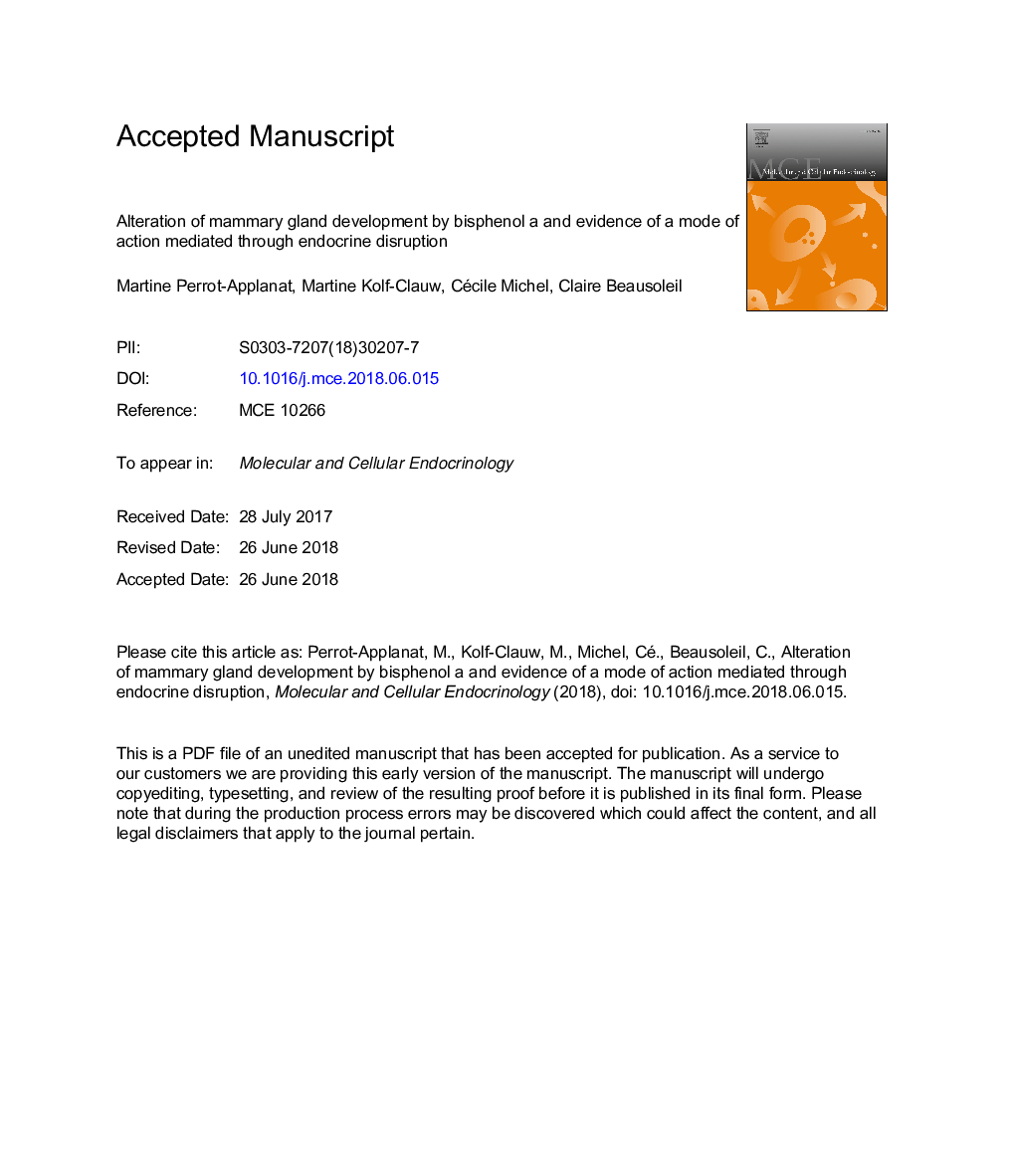| Article ID | Journal | Published Year | Pages | File Type |
|---|---|---|---|---|
| 8950006 | Molecular and Cellular Endocrinology | 2018 | 44 Pages |
Abstract
The development and function of the mammary gland are endocrine-dependent processes, depending on the stage of development. Foetal and/or postnatal exposure to low doses of BPA alters tissue organisation through epithelial proliferation and stroma-epithelial interactions. BPA also alters the expression of E2-dependent epithelial and stroma transcriptomes. Several signalling pathways are consistent with the observed phenotype: proliferation and apoptosis, a focal adhesion pathway indicating changes in biomechanical properties of the extracellular matrix, and immune function. Some of BPA's effects are reversed by oestrogen and/or GPER inhibitors. BPA also alters the expression of epigenetic marks (EZH2, HOTAIR), which would explain the delayed effect of foetal BPA exposure. In conclusion, experimental evidence shows that pre- or postnatal BPA exposure consistently causes endocrine modifications in the mammary tissue of different animal species, disrupting stromal-epithelial interactions and ultimately increasing its susceptibility to carcinogens. An interspecies comparison highlights why and how these effects apply to humans.
Related Topics
Life Sciences
Biochemistry, Genetics and Molecular Biology
Cell Biology
Authors
Martine Perrot-Applanat, Martine Kolf-Clauw, Cécile Michel, Claire Beausoleil,
